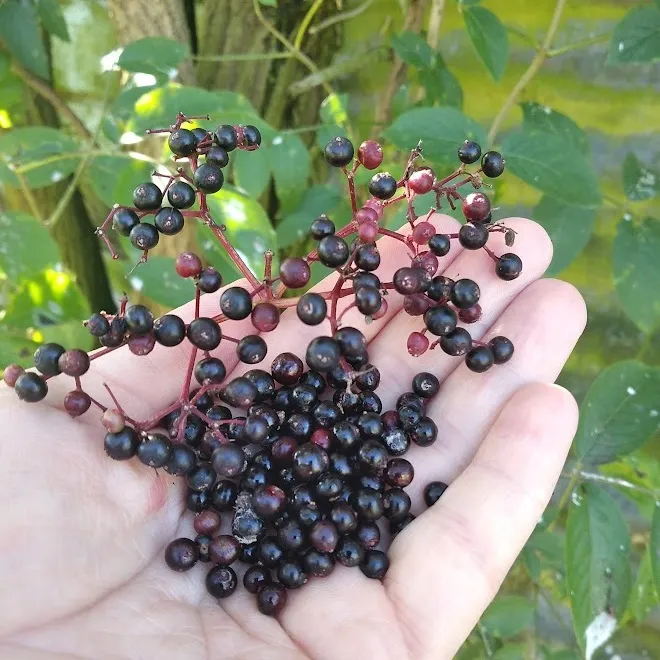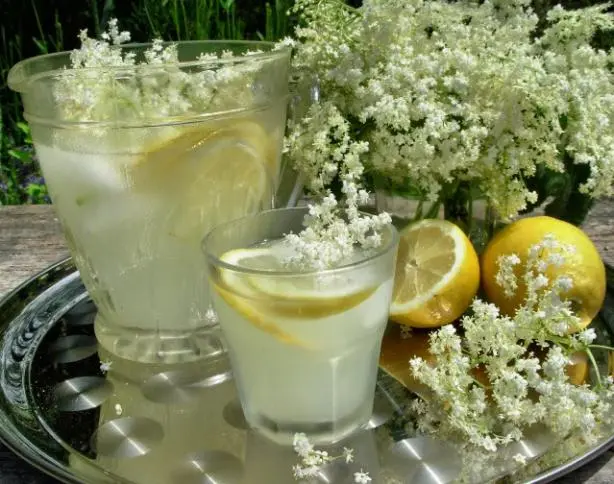Written by Ann Marie Hendry – 16 May 2019
From May to early June, elderflowers fill the hedgerows and woodland edges, marking a delightful time for foragers. Whether you’re familiar with the European elder (Sambucus nigra) or the North American variety (Sambucus canadensis), both provide a bounty of edible flowers and berries. This plant is incredibly generous and offers multiple harvests of both blossoms and fruit.
Although separated by an ocean, these two species are remarkably similar, and foragers on both sides of the Atlantic treat them similarly. Both elderflowers and elderberries can be used to create drinks, desserts, and even medicinal concoctions. The elderflower champagne, in particular, is a favorite that’s guaranteed to impress.
Identifying Elderflowers and Elderberries
Elder is one of the easiest wild shrubs to identify. The compound leaves usually consist of five to seven serrated leaflets, and the white, fragrant flowers bloom in large clusters known as corymbs. Later in the season, black or purplish-black elderberries appear. The bark of the elder becomes fissured as it matures, which is especially noticeable in European elders.
Note: The shape of elder’s leaves and flowers is similar to ground elder, a perennial weed, so be cautious when foraging. Always ensure proper identification before harvesting.

Elderflower Recipes
Once you’ve gathered a basketful of elderflowers, they can be used in a variety of recipes. Elderflower cordial is a refreshing and easy-to-make beverage, perfect for hot summer days. The recipe is simple, and you can adjust the sweetness to your preference.
For an elegant, foraged drink, try making elderflower champagne. Elderflower cordial is also an excellent mixer for gin, vodka, and sparkling wines.
For a creative twist, mix elderflower cordial with gooseberries to make delicious fruit leathers. Alternatively, combine it with gooseberry jam for a similarly delectable treat. If you’re in the mood for something savory, you can dip whole elderflower heads in batter to make elderflower fritters—just be sure to avoid the stems, as they can cause stomach discomfort.

Elderberry Drinks and Desserts
When harvesting elderflowers, be mindful not to take too many from each plant. Leave some behind to allow the flowers to mature into elderberries. Unlike elderflowers, elderberries must be cooked before consumption. You can use them to make elderberry jam, syrups, pies, crumbles, wine, or even a sloe gin-style liqueur.
Be respectful when foraging—don’t strip bushes bare of their berries. Birds rely on elderberries for food in autumn, and by leaving some for them, you’re helping ensure a healthy elder population for future seasons.
Growing Elderflower
If you prefer not to forage, you can easily grow elder in your own garden. While elder is said to protect against evil spirits when grown near the door, it’s not the most neatly behaved plant. It tends to form an untidy shrub with root suckers, so it’s best planted in a less formal area of your garden. Elder is adaptable to most soils and partial shade, though it thrives best in full sun.
For those looking to add drama to their garden, there are cultivated varieties like the black-leaved Sambucus nigra ‘Black Lace’, which features dark foliage and pink flowers, or the golden-leaved Sambucus canadensis ‘Aurea’.

Finally, if you’re looking for a bit of magic, try observing the elder tree on Midsummer’s Eve—legend has it that fairies dwell beneath it, and if you fall asleep, they may carry you away!
In summary, elderflowers and elderberries offer endless opportunities for delicious drinks and dishes. Whether foraging or cultivating these shrubs, they provide a unique and enjoyable way to connect with nature while creating seasonal treats. Just remember to respect the plant and its role in the ecosystem, ensuring that future harvests will be just as fruitful.
